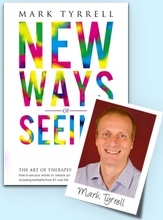This podcast is a clip from the Live Q&A teaching sessions which are part of our online homestudy course How To Lift Depression Fast, where therapy practitioners from all over the world learn a structured approach to treating depression.
Here’s the question asked of me by a practitioner from the USA….
“In the case of a very distraught person who is extremely depressed and may be crying and agitated have you found preferred methods of getting them out of that state, along the lines of a crisis intervention scenario?”
Listen to the answer by clicking the play button below:
In this podcast, I discuss:
- Ways of using your body language to unconsciously connect with someone in a very agitated state
- How to then ‘lead’ them into a calmer emotional state
- An example from Milton Erickson‘s work
- What ‘sort’ of words to use (and avoid!) when talking to a highly emotional person.
Read about ‘How To Lift Depression Fast’, my online homestudy course »
Read the transcript below:
Right, and another question as well which is from Eric in Minnesota. I’ll just read the question.
“In the case of a very distraught person who is extremely depressed and may be crying and agitated, have you found preferred methods of getting them out of that state along the lines of a crisis intervention scenario? I guess I know there’s no perfect words or phrases in that situation, but some approaches or best practices would be appreciated. When someone is that depressed they aren’t always that receptive of being helped or open to suggestion in order to feel better. Thanks.”
That’s a really excellent question. In my experience someone who is in that kind of crisis, emotional crisis state, if you like, isn’t the person who’s come along under their own volition to therapy. You know, either someone else has brought them in or in some sort of other capacity, maybe a social worker who’s gone into their house to help them. They aren’t necessarily the sort to help themselves if they’re that sort of … emotional intensity at the time they’re actually seeing them.
I think it comes down to a question of partly rapport. If you think about building … calming somebody down. If you think about leading somebody’s emotional state, which is what you do if you calm somebody down. You’re leading their emotional state. If you make someone laugh, you’ll lead their emotional state. If you make someone more depressed you lead their emotional state.
If we think, well, that’s essentially what we need to do in order to help somebody feel better in the moment, so to speak. We’re not curing their depression away in one bound, but we’re helping them feel better in the moment. The first thing that we need to do, I think, is come alongside them. Basic sort of rapport building kind of principles apply here, I think.
If someone is extremely anxious or angry and we go in and we’re very calm and relaxed and so forth, what we’re doing is essentially saying, “I am completely unlike you. I am completely different to you. I’m completely relaxed and you’re completely angry.” You know what it’s like if you’re very, very angry and someone is telling you to calm down, you know, and it makes you more angry? Because they are slightly become another species for that moment in time.
If we can start off ourselves not too relaxed, a little bit tense in our voice, you know, our voice cadence matching theirs, the amount of words we speak a minute sort of matching theirs, not looking too relaxed ourselves. In other words we’re going to say we are extreme as they are. Then we are subconsciously more likely to be able to connect with them, so that bit by bit we can start to lead their experience.
This can be subliminal, below conscious awareness almost. We’re not going in and saying “Calm down” to somebody, but if we use, we weight our language using more calming words in the conversation which is maybe necessary to do with that person. Then we’re sending a message to the part of them which won’t resist so much, so that things can calm down.
A famous example of this is Milton Erickson talking to a man who is extremely averse to having any kind of therapy input who is in extreme pain from cancer. The man loved gardening and Erickson talked to him about gardening and talked about tomatoes. The man’s favorite thing to grow was tomatoes, as it happened, and Erickson was talking to him about he comfort that tomatoes can feel as they relax in the soil. You know, and the man was focused because Erickson was talking in a strange way, but also he was talking about something that interested him.
Also the subliminal part of the message was about calming and relaxed and rest and feeling better and so forth. Of course, the part of the man that could respond to that felt it too, but that wasn’t the conscious part of him.
So being able to communicate to the person on some conscious mind as well as their conscious mind is a huge boon for any therapist to do, and it’s not necessarily a question of asking someone to close their eyes and go into hypnosis or something like that. It can be done conversationally and also without the therapist even really being aware that they’re doing it. If they’re both skilled in it they tend to do it unconsciously themselves. I remember working with a young guy of about seventeen or eighteen. His mother brought him in for therapy, and he was extremely … He had psychology problems, but he was someone very likable about that.
His mother said that he got incredibly enraged and upset every time someone mentioned his father. His father had told him a couple of years before that he never wanted to see him again, just outright he said to the young lad when he was about fifteen, fourteen, fifteen, “I don’t want you in my life anymore. I don’t want to ever see you again. I don’t want to have anything to do with you.” He said this in front of the mother. Nothing the son had done had precipitated that, not that it perhaps should do anyway, whatever he had done, but he hadn’t done anything to precipitate that.
Every time the father was mentioned, the boy actually went into an emotional crisis. He started to do that as his mother was telling me what the problem was. The boy was sitting there, the young man was sitting there and his mother was sitting there. He started hyperventilating and crying and sort of wailing and this kind of thing.
First thing I did was speed up my language. Because his heartbeat was going faster, so I wanted to have something of me matching the speed at which he was experiencing his reality at that present moment. I revved up my rate of speech to match his experience and then I very gradually started to slow it down. Okay? Minimally, so we were matching some part of our reality, then I started to lead after awhile and found that his breathing followed and so he breathed a bit more slowly.
Then I got him to focus outside on something on the wall in my room, so he’s focusing outside of himself literally. This is something else I might do, I might just say, “Just look there. Just focus on that. Okay? Now, I know that it’s very difficult.” Et cetera, et cetera. Then I would attempt to breathe in time with him and I’d begin to slow my breathing down and I’d match his breathing sort of slowed down.
I was also using thinking words. Okay? It’s been found that the type of words that you use, not surprisingly, appeal to different parts of the brain. If you use very emotive words, then emotional sections of the person’s brain would become more activated. If you ask someone how they feel or if you ask someone about the misery they’ve been feeling or whether they’re happy or sad, you’re really not just appealing to their emotional brain, but in some sense you’re encouraging its activation, so to speak.
If you start using think words when someone is very emotional what you can do is start to dilute the emotional effect. Asking what he thinks about this and if he was to see the situation from the outside, how would he analyze it? You know, using words like analyze, weigh up, think. Okay? What we think about this, or thinking about that, when we look at it from outside and et cetera, et cetera.
Very, very quickly he calmed down. His mother said that had never happened before. He’d never started to have this sort of feeling and have it kind of go away like that. To him that was a powerful experience. Building rapport with somebody, learning unconscious communication so you can connect with them, and then start to lead them on an emotional level is a very powerful thing to do.










